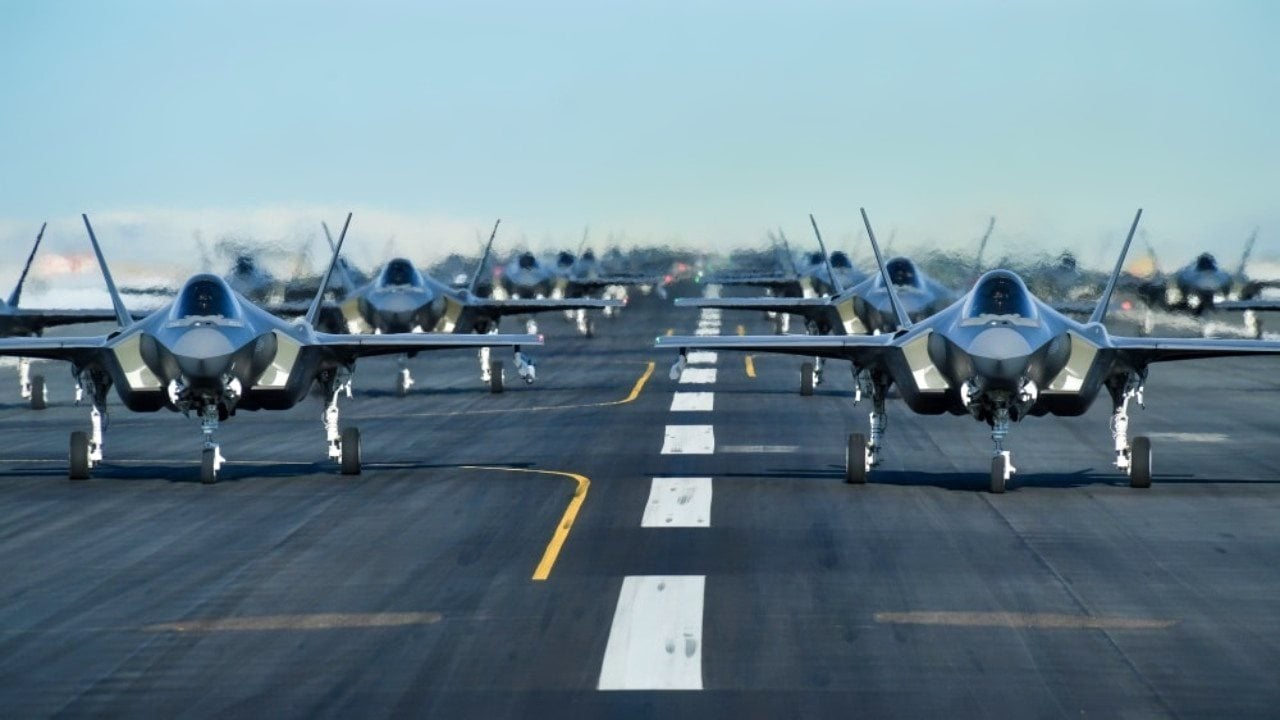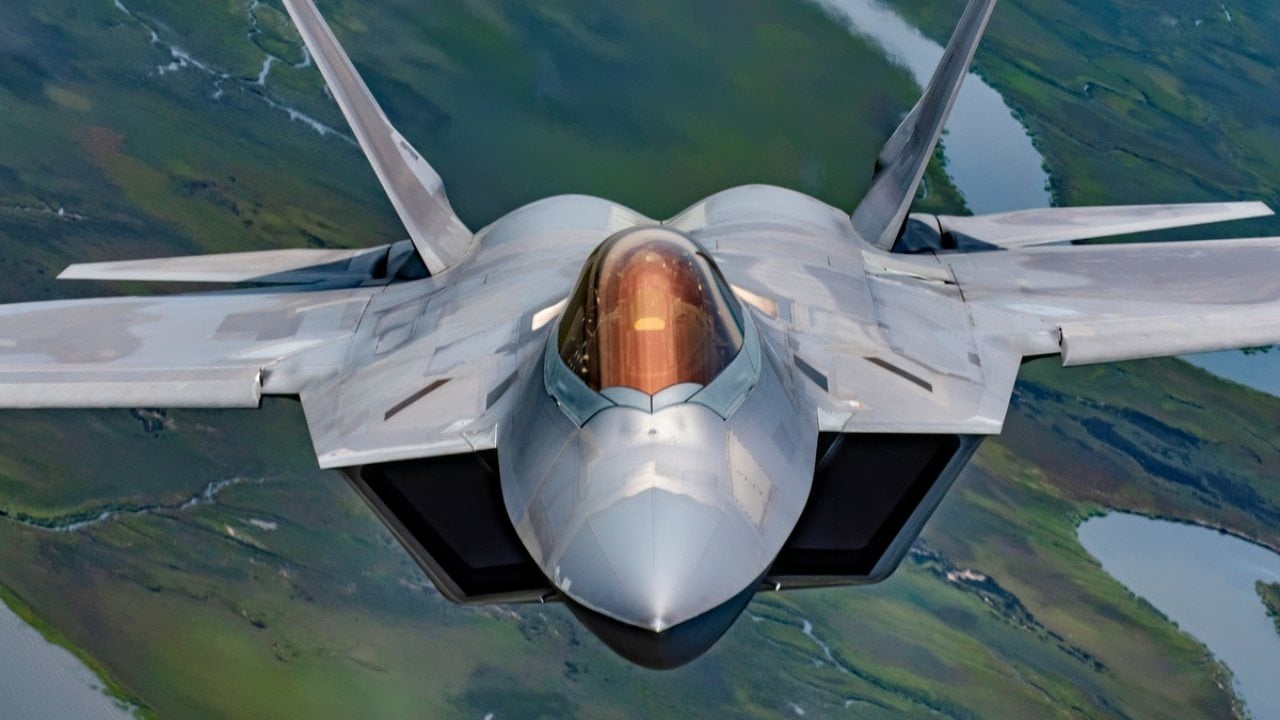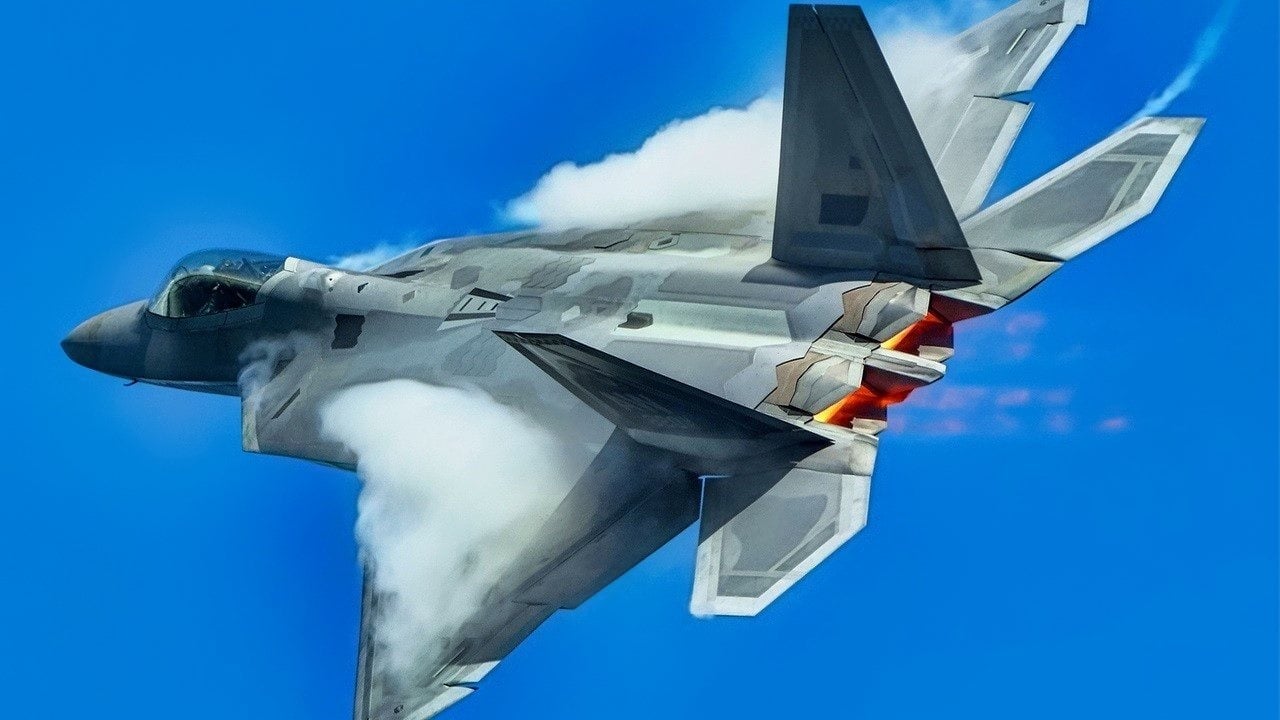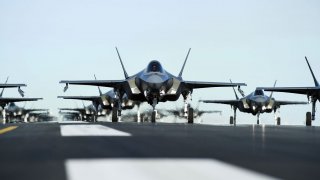F-22, F-35s and F-15 Fighters Take Part in Big 'Elephant Walk'
Last month, the United States Air Force demonstrated its capabilities at Kadena Air Base, Japan, with an impressive "elephant walk" involving advanced aircraft, including F-15C, F-16C, F-22A, F-35A, and more.
Summary: Last month, the United States Air Force demonstrated its capabilities at Kadena Air Base, Japan, with an impressive "elephant walk" involving advanced aircraft, including F-15C, F-16C, F-22A, F-35A, and more.

This display showcased readiness and power, particularly as new rotational units, F-16Cs and F-22As, arrived.
The exercise strengthens readiness and teamwork essential for air combat missions. Kadena's strategic importance is underscored by its proximity to key locations in the Indo-Pacific.
Despite a minor setback with an F-22's nose gear issue, the Air Force's commitment to regional stability remains clear.
The United States Air Force showed off its fighting capabilities last month at Kadena Air Base, Japan – and lined up its fleet of warbirds on the tarmac in an impressive "elephant walk."
"The Air Force's largest combat wing and its mission partners on Kadena Air Base generated an impressive array of some of the most advanced aircraft on earth including F-15C, F-16C, F-22A, F-35A, MQ-9, HH-60G/W, MC-130J, KC-135, P-8, RC-135 and E-3 ready to perform any air combat mission to ensure a free and open Indo-Pacific," the base announced via a statement. "This gathering of air power comes as we welcome our new rotational units, bringing F-16Cs and F-22As to the Keystone of the Pacific, while also saying arigatou and farewell to our F-35As and Air National Guard F-15Cs."
Directly after the photos of the aircraft were taken from both the ground and above, the mix of air power took to the skies as part of a large force exercise to strengthen their readiness to defend the U.S. ally.
The Elephant Walks of Kadena
This was just the most recent elephant walk at the base in Okinawa, a reminder that the island remains the "Keystone of the Pacific." A similar show of force was on display in late November 2022, when six different types of aircraft were lined up at Kadena, and another elephant walk was conducted at the base last November.
The first elephant walks occurred during the Second World War when large fleets of allied bombers massed for attacks – and observers on the ground noted that as the aircraft lined up, it resembled the nose-to-tail formations of elephants walking to a watering hole.
Today, the U.S. Air Force employs elephant walks to show the capability of a unit as well as the teamwork that is required to conduct such an operation. It also can help pilots prepare for the launching of fully armed aircraft in a mass event if needed.
F-22s Back in Japan
Months back, the United States Air Force deployed F-22 Raptors operated by the 199th and 19th Fighter Squadrons, back to Kadena.
"While deployed to the Keystone of the Pacific, 19th and 199th FS Raptors will work in conjunction with additional heavy, reconnaissance, and fourth generation fighters, and fifth generation fighter assets that are both augmented to and stationed at Kadena to ensure continued steady-state fighter capabilities in the region," the Air Force announced.

This most recent deployment of fifth-generation Raptors comes as the 18th Wing oversees the phased retirement of Kadena's fleet of F-15C/D Eagles.
Yet, despite the show of force, the air service faced a minor setback last week as well – when one of the fifth-generation air superiority fighters suffered a nose gear issue after arriving at Kadena. According to reports, the incident occurred after the F-22 landed at Kadena Air Base, and the malfunction occurred while it was being maneuvered off the runway with its engines turned off.
Whether one mishap outshines the capabilities of the U.S. Air Force has yet to be seen, but the service will likely pull out all stops to highlight its show of force due to the strategic importance of the base.
Okinawa, with its extensive network of air bases and naval facilities, plays a pivotal role in maintaining regional stability and safeguarding vital maritime and aerial routes. It is roughly 900 miles from Tokyo, Manila, Seoul, and Hong Kong. It sits 1,200 miles west of Guam, the American territory that serves as a critical hub for U.S. military operations in the region.

Author Experience and Expertise: Peter Suciu
Peter Suciu is a Michigan-based writer. He has contributed to more than four dozen magazines, newspapers, and websites with over 3,200 published pieces over a twenty-year career in journalism. He regularly writes about military hardware, firearms history, cybersecurity, politics, and international affairs. Peter is also a Contributing Writer for Forbes and Clearance Jobs. You can follow him on Twitter: @PeterSuciu.
You can email the author: [email protected].
All images are Creative Commons.
More from National Interest
PAK DA - Russia Is Building a New Stealth Bomber
Houthis Might Have Attacked a Navy Aircraft Carrier - Report


